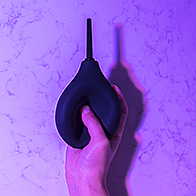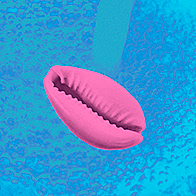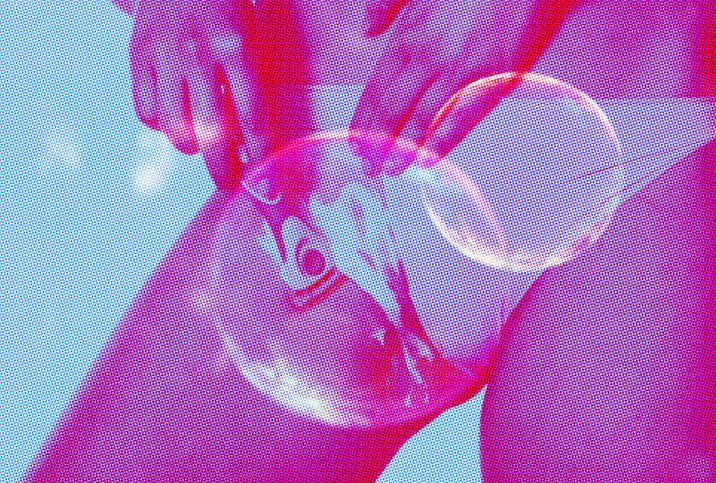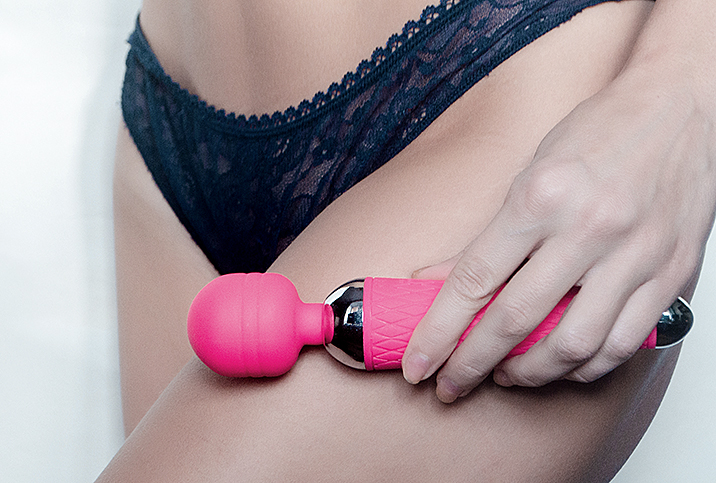No, Your Vagina Does Not Actually Need a Steam Cleaning

While popular celebrities tout the benefits of vaginal steaming, it's not a practice recommended by most doctors. So, what's the truth? Will a squat and steam work magic on your lady parts?
Vaginal steaming, also called yoni steams and perineal steams, is an ancient practice dating back thousands of years wherein women literally hover over hot water with herbs and steam their vagina. Jennifer Wider, M.D., a nationally renowned women's health expert and author, told us vaginal steaming has historically been practiced in many cultures and countries.
Rosita Arvigo, D.N., a retired doctor of naprapathy and founder of The Abdominal Therapy Collective, echoed Wider and emphasized the practice of vaginal steaming is one that has been passed on from generation to generation across cultures.
"I have known midwives from Egypt, Iran, Israel, Mexico, Guatemala and Honduras who were taught by their mentors and mothers to use the steams," Arvigo said. "I knew a 99-year-old midwife who said her grandmother taught her to do the steams, and the grandmother was taught by her grandmother."
So, how did the ancient worldwide practice gain popularity in America today? "It has recently grown in popularity in Western culture because Gwenyth Paltrow's lifestyle website, GOOP, touted its benefits, and other celebrities, including Jada Pinkett Smith and Chrissy Teigen, jumped on the bandwagon," Wider explained.
Currently, there have not been any studies done on vaginal steaming or the validity of the touted benefits.
So, what exactly is vaginal steaming?
Vaginal steams take preparation but are simple to practice. The reality is pretty much exactly what the name indicates. "Perineal steams involve a simple, profound practice of sitting over a pot of steaming herbs for 20 to 30 minutes," said Arvigo. "There are dozens of herbs one can use… but they are mostly aromatic, nontoxic ones, like basil, rosemary, thyme, marigolds, roses, lavender, oregano, motherwort and goldenrod."
Arvigo has a couple of recommendations for those considering a perineal steam. She recommends the steams be done in the week prior to menstruation to promote a lavage or decongestion of the uterine membrane. "For women with painful menstruation, I recommend two perineal steams in the week before menses for three cycles, or until menstrual fluid is thin and pink and there are no more painful cramps that last more than 30 minutes," she said.
Arvigo also claims vaginal steaming can be used for women undergoing assisted reproductive technology (ART), the most common being in vitro fertilization (IVF). "Physicians report that the cervix is softer and moister, thus easier to insert their instruments," she said.
Benefits of vaginal steaming
Clinics and spas offering the steams claim that after treatment, women can expect to experience benefits such as a reduction in menstrual cramps, cleansing and rejuvenation of the uterus by getting rid of unwanted tissues, and a reduction in uterine fibroids.
According to Arvigo, specific ailments that vaginal steams address include endometriosis, fibroids, polyps, fertility challenges, chronic or acute undiagnosed pelvic pain, dark blood at the beginning of the cycle and dark blood at the end of the cycle. In Arvigo's practice, she said perineal steams have been extremely effective and gratifying for her clients.
However, despite anecdotal reports about the effectiveness of vaginal steaming, science currently cannot back the claims. Wider emphasized, "There is no scientific or medical evidence that vaginal steaming could treat conditions like fibroids and painful periods or increase libido."
Should you try vaginal steaming?
Vaginal streaming is not recommended by most doctors. There are significant risks to the practice, which can include vaginal burns and inflammation of vaginal tissue. Allergic reactions can also occur in response to the herbs used in the steam. Wider said there is evidence steams can increase the risk of infection, as well.
In just one instance, a 62-year-old woman sustained second-degree burns following vaginal steaming in an attempt to reduce vaginal prolapse.
Arvigo cautioned about the risk of vaginal burns, as well. "Clients are instructed to be careful that the steam feels comforting, warming, not blistering," she said.
'There is no scientific or medical evidence that vaginal steaming could treat conditions like fibroids and painful periods or increase libido.'
She also warned it's important for clients to be informed of the inevitable changes in their cycle after they steam. "Those changes can be more blood, darker blood, passage of clots and stringy matter, and maybe cramps while passing this matter," Arvigo said.
For some women, combining holistic healing with Western medicine can be empowering. However, many doctors and OB-GYNs remain skeptical of the practice, saying the claims made by practitioners are not biologically possible. Currently, there is no research investigating vaginal steaming and no science backing the supposed benefits. As Wider emphasized, "Vaginal steaming is not a safe or effective practice, and most doctors would recommend avoiding it."




















